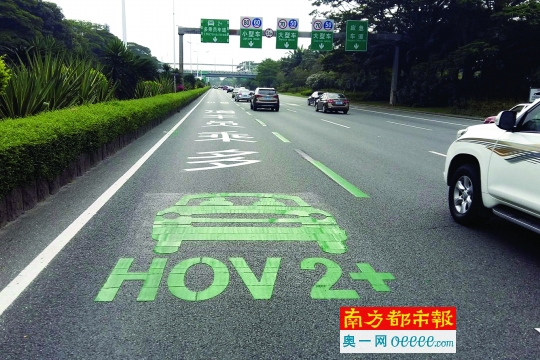 |
|
The HOV lane in Shenzhen. [Photo/ycwb.com] |
Traffic authorities in Shenzhen, south China's Guangdong province, said high-occupancy-vehicle (HOV) lane has been a success after it was introduced to help deal with traffic congestion in the city four months ago.
The HOV lane is on Binhai Road, a freeway connecting the city's Nanshan and Futian districts. Small vehicles with no more than nine seats must carry at least two occupants, including the driver, in order to drive in the lane from 7:30 am to 9:30 am, and from 5:30 pm to 7:30 pm on working days.
Statistics from the traffic police show that the number of vehicles using the HOV lane without passengers has fallen by 11 percent since April 18, while the number of vehicles carrying at least two people on the HOV lane has climbed by 17 percent.
Police said the HOV lane could enable the same number of vehicles to carry an additional 870 people per hour.
Local traffic police said they would step up monitoring next week targeting violators of the rule.
Starting Aug 8, drivers who misuse the carpool lane will be fined 300 yuan (US$48). Apart from the ticket, violations will be recorded on the personal credit records of drivers, which will affect areas such as employment and obtaining a loan, according to the police officer.
Both surveillance cameras and traffic police officers on patrol will monitor vehicles using the lane.
A driver surnamed Ke told Shenzhen Daily he drove in the HOV lane because he was in a hurry. "I really support the use of HOV lanes because it is a good idea and it does not disrupt our commute," Ke said.
Since HOV lanes were first introduced in the US in the late 1960s, they have been adopted by many countries, including Canada, Australia and New Zealand, but are rare in China.
Shenzhen, which borders Hong Kong, has more than 3 million vehicles. Vehicles have become the largest contributor of pollutants, responsible for 70 percent of the city's air pollution, according to the city government.
To tackle rising congestion and pollution, the city enacted a car purchasing restriction system in late 2014, requiring prospective buyers to acquire new car plates by lottery or auction.
